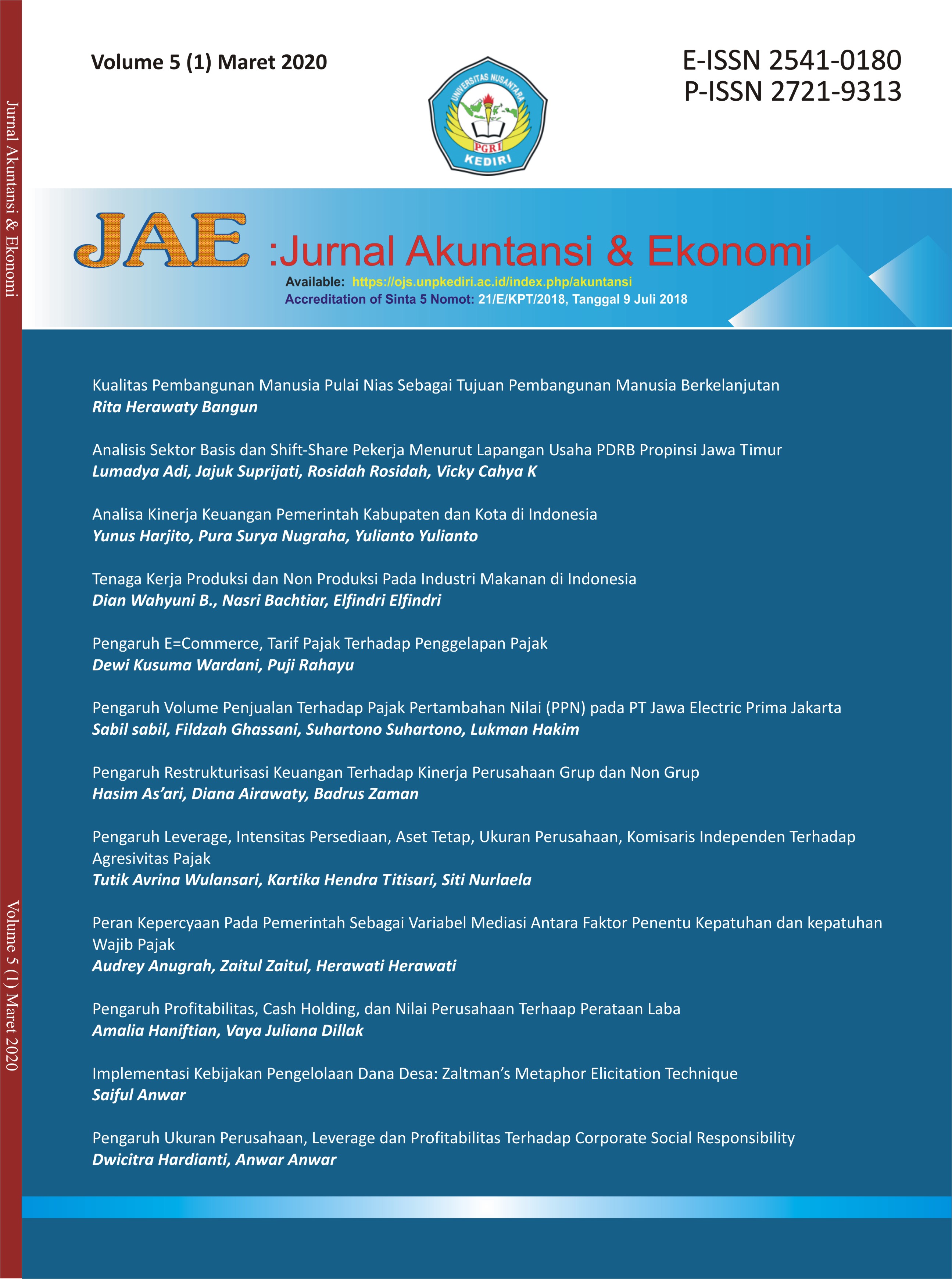Tenaga Kerja Produksi Dan Non Produksi Padaindustri Makanan Di Indonesia (Production and Non Production Workers on Food Industry In Indonesia)
DOI:
https://doi.org/10.29407/jae.v5i1.13996Abstract
This study aims to determine the role of production and non-production workers in the large and medium-scale food industry in Indonesia and to determine the response of the food industry to the demand for production and non-production labor on changes in several input factors in the production process. The fixed effect model in panel data analysis is performed on secondary data in the form of raw data of the Manufacturing Industry Annual Survey in 2013-2015. Demand for production and non-production labor is obtained through the derivation of the production function of Constant Elasticity of Substitution (CES). The results showed that non-production labor had a positive and significant effect on output in all industrial categories, while production labor had only a positive and significant effect on the overall industry category, non-export oriented and located in regions outside of Java. Production and non-production workers are complementary. Demand for production and non-production labor is affected by changes in wages, respectively. The food industry is labor intensive and applies a high wage system (efficiency wage theory).
Downloads
Published
Issue
Section
License
Authors who publish with this journal agree to the following terms:
- Copyright on any article is retained by the author(s).
- The author grants the journal, right of first publication with the work simultaneously licensed under a Creative Commons Attribution License that allows others to share the work with an acknowledgment of the work’s authorship and initial publication in this journal.
- Authors are able to enter into separate, additional contractual arrangements for the non-exclusive distribution of the journal’s published version of the work (e.g., post it to an institutional repository or publish it in a book), with an acknowledgment of its initial publication in this journal.
- Authors are permitted and encouraged to post their work online (e.g., in institutional repositories or on their website) prior to and during the submission process, as it can lead to productive exchanges, as well as earlier and greater citation of published work.
- The article and any associated published material is distributed under the Creative Commons Attribution-ShareAlike 4.0 International License







